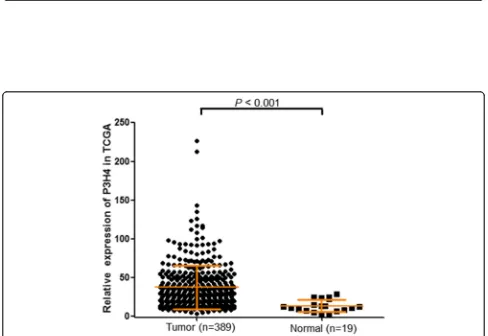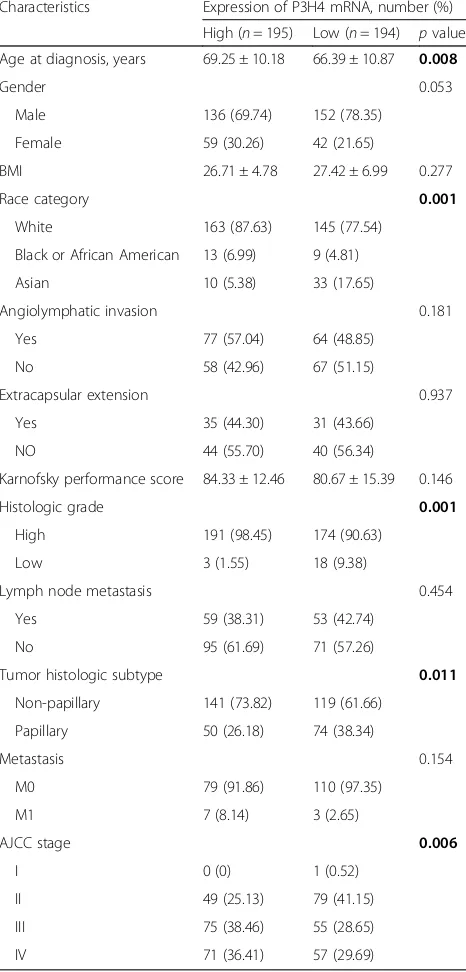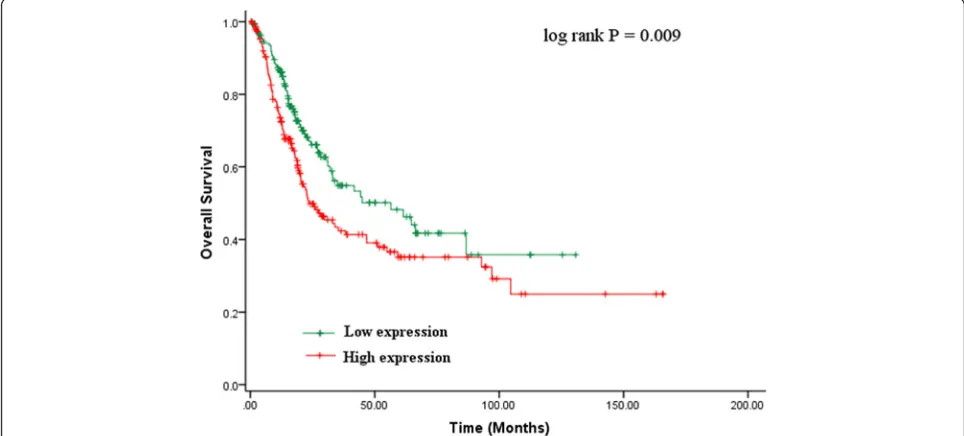P3H4 is correlated with clinicopathological features and prognosis in bladder cancer
Full text
Figure




Related documents
Conclusions: This case report describes a rare underlying cause of hematoma after CEA, which reminds us to pay attention to prostate symptoms or related medical history,
months; p = baby’s age, in completed months, at the time of the last visit prior to this month ( p = 0 where there has been no visit prior. to “this month”) ; n = number of
By using the obtained identity and analysis, some new weighted integral inequalities for the classes of co-ordinated convex, co-ordinated wright-convex and co-ordinated
A swept frequency absorbance plasma diagnostic technique for measurement of self-resonance frequency, intrinsic plasma-tool distributed capacitance, radiative energy loss, and
The data sample used in this analysis, collected in 2013, is several times larger than that in the previous CMD-2 measurements, and is comparable in statistics to ISR data of the
In this work we considered quantum temporal imaging on the basis of a time lens imple- mented by a sum frequency generation process with a chirped pulse pump.. the main results of
Probably the most significant finding of this study is pathway fails to contribute significantly to the protection that the RAD6/RAD18 PRR and mutagenesis pathway of cells against
Pulmonary arteriovenous malformations in children with hereditary hemorrhagic telangiectasia: a longitudinal study.. Shovlin CL, Guttmacher AE, Buscarini E,